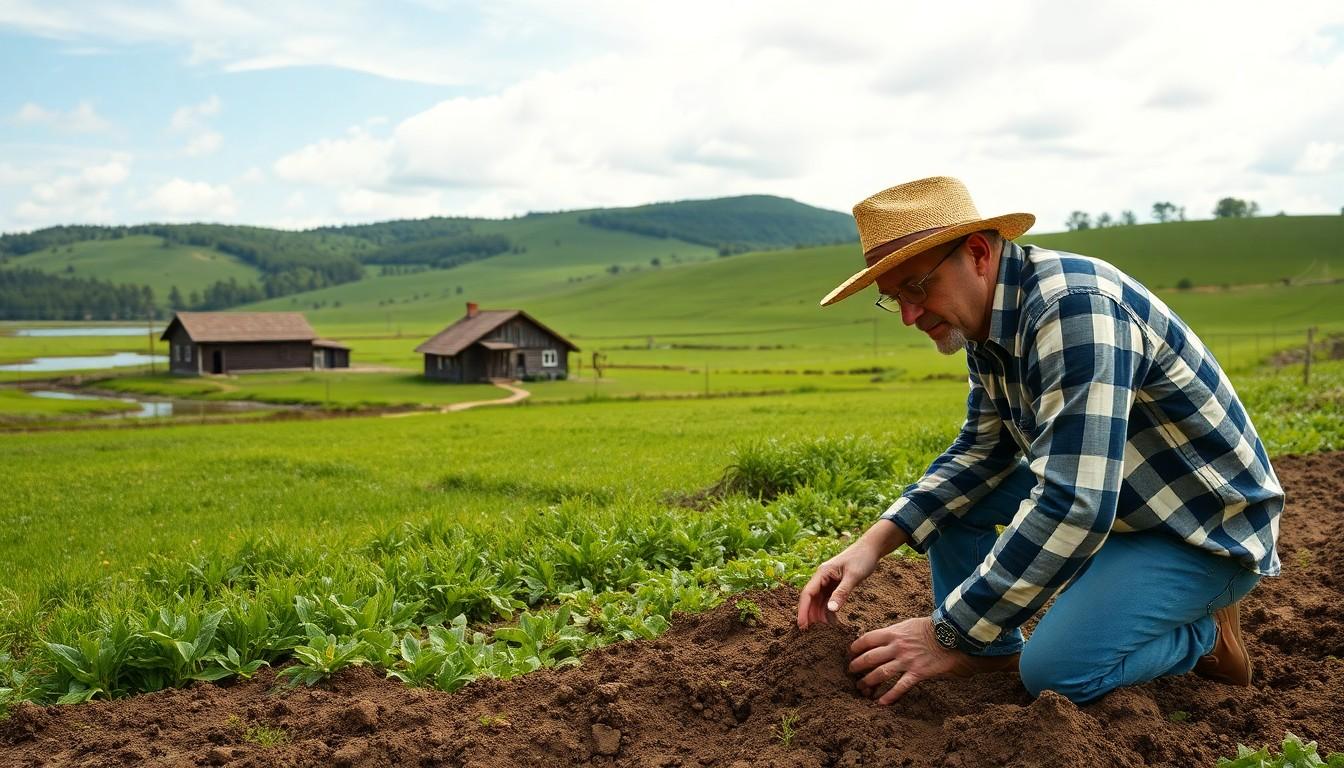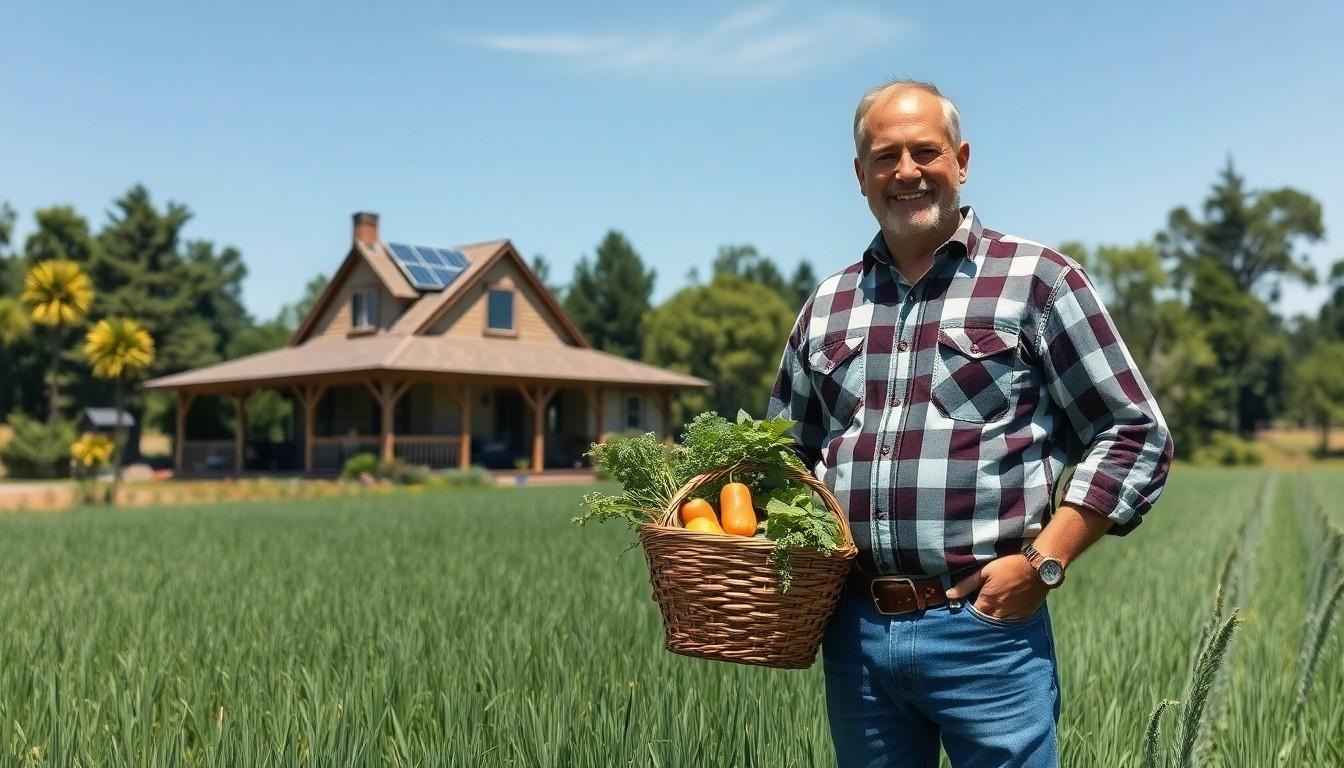Dreaming of a life where fresh veggies don’t come from the grocery store? Homesteading land for sale might just be your ticket to a self-sufficient paradise. Picture waking up to the sound of roosters crowing instead of alarm clocks, and growing your own food while dodging the chaos of city life. It’s not just a dream; it’s a lifestyle waiting for you.
Homesteading Land for Sale
Homesteading offers a fulfilling lifestyle choice focused on self-sufficiency and a deep connection to nature. Individuals seeking this way of life often consider purchasing land dedicated to homesteading.
Definition and History
Homesteading refers to a lifestyle emphasizing self-sustaining living through agriculture and resource management. Historically, it gained traction in the United States during the 19th century, particularly with the Homestead Act of 1862 that encouraged settlement in the western territories. This act allowed individuals to claim land, requiring them to improve it and remain for five years. Modern homesteading retains these principles while integrating sustainable practices such as permaculture and organic farming.
Benefits of Homesteading
Homesteading promotes several advantages ideal for those craving independence. Financial savings arise from growing one’s own food, reducing grocery bills, and minimizing reliance on commercial products. Enhanced well-being frequently results from living in a tranquil environment, fostering mental health and physical fitness. Additionally, acquiring knowledge about sustainable farming practices equips individuals with skills valuable in today’s world. Community building occurs as homesteaders often connect with like-minded people, creating supportive networks for shared resources and experiences.
What to Look for in Homesteading Land

Finding the right homesteading land involves several key factors that contribute to a successful and fulfilling lifestyle.
Location Considerations
Location significantly impacts daily life on a homestead. Proximity to essential services, such as grocery stores and hospitals, matters for convenience. Access to water sources affects agricultural and personal needs. Climate influences the types of crops that can grow and animals that can thrive. Evaluating nearby communities can enhance social connections, providing support and resources. Additionally, zoning laws dictate what can be done on the land, making it crucial to research these regulations before purchasing.
Land Features and Resources
Land features play a vital role in the homesteading experience. Soil quality directly impacts food production, so testing soil before buying is wise. Natural resources, such as woodlands for firewood and water sources for irrigation, are indispensable. Terrain affects building possibilities and accessibility for farming machinery. Wildlife presence can assist in pest control or pose challenges. Assessing existing structures, like barns or fences, can save time and money during the setup phase. Select land that aligns with unique homesteading goals.
Types of Homesteading Land for Sale
Homesteading land varies based on location and local laws, impacting lifestyle choices significantly. Two primary categories include rural and suburban areas.
Rural vs. Suburban Areas
Rural homesteading land typically offers vast open space, enabling freedom for agriculture and livestock. Wildlife encounters often occur more frequently in these regions. Existing infrastructure may be limited, which can necessitate building essential utilities. Suburban homesteading land tends to provide greater access to services like grocery stores and schools. Size may be more restricted, but infrastructure support often includes established roads and utilities. Individuals frequently opt for suburban options when seeking community engagement alongside homesteading opportunities.
Different Zoning and Regulations
Zoning laws directly influence land use and can vary widely by location. Certain areas may impose restrictions on building structures or raising animals, impacting homesteading capabilities. It’s critical for prospective buyers to research zoning designations that allow for agricultural use. Regulations governing land use often dictate what can be built and how resources can be utilized. Variances may be obtainable, though they can require additional processes. Understanding these factors helps individuals select land that meets their specific homesteading aspirations.
Popular Locations for Homesteading Land
Several regions across the United States offer ideal opportunities for purchasing homesteading land. Prospective buyers can explore areas that provide the resources needed for sustainable living.
Regions with Affordable Land
Many regions are renowned for affordable land options. The Midwest features states like Missouri and Indiana, where land prices remain low, often under $4,000 per acre. Southern states such as Arkansas and Kentucky also provide budget-friendly parcels, typically ranging from $3,000 to $5,000 per acre. The northern regions, including parts of Maine and Michigan, boast inexpensive options for those seeking rural properties. These regions offer ample space for cultivating crops, raising animals, and building homesteads. Budget-conscious buyers can find substantial opportunities in these areas.
States Encouraging Homesteading
Certain states actively encourage homesteading through favorable policies and land availability. Alaska stands out, providing vast tracts of land for those willing to build and improve their properties. Legal statutes support the establishment of off-grid lifestyles. Colorado’s relaxed regulations and stunning landscapes attract many homesteaders. Furthermore, Tennessee, with its rich farming heritage, promotes self-sustainability while maintaining reasonable land prices. Each of these states excels in creating favorable environments for aspiring homesteaders.
Tips for Purchasing Homesteading Land
Purchasing homesteading land involves careful consideration and planning. It’s essential to approach the process with a clear strategy.
Finding Reliable Listings
Exploring online platforms dedicated to real estate helps find reliable listings for homesteading land. Websites like Zillow, LandWatch, and Land And Farm focus specifically on rural and homesteading properties. Local real estate agents with expertise in agricultural land can offer invaluable insights and access to listings not widely advertised. Attending land auctions or local land fairs provides opportunities to connect directly with sellers and examine properties. Networking with other homesteaders can also yield tips on available land or leads on upcoming listings. Each of these avenues contributes to a comprehensive search for the perfect homesteading location.
Navigating Legal Issues
Understanding zoning regulations is critical when purchasing homesteading land. Local planning departments provide resources regarding land use, ensuring alignment with homesteading goals. Familiarity with property deeds and title reports aids in identifying any covenants or restrictions affecting land use. Consulting an attorney specializing in real estate can clarify potential legal issues, such as easements or access rights. Researching state and local laws regarding agricultural practices and building permits prevents future conflicts. Each of these factors plays a significant role in ensuring a smooth acquisition process for homesteading land.





